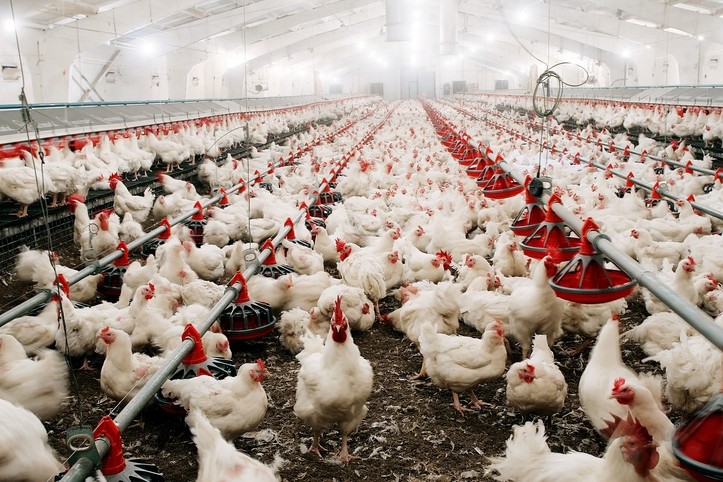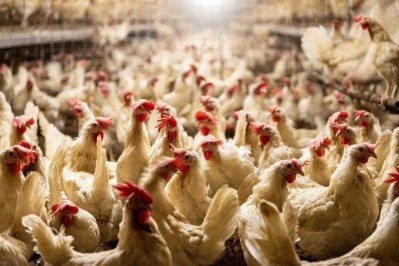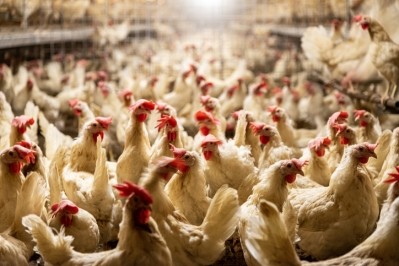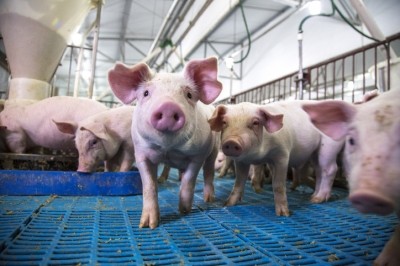New xylanase product by EW Nutrition unveiled at Victam

Axxess XY was officially launched at Victam in Bangkok.
An intrinsically thermostable xylanase, the product is designed to target both soluble and insoluble fiber fractions found in various poultry feed ingredients such as corn, wheat, grain by-products, and oilseed cakes. This formulation, according to the supplier, unlocks trapped nutrients within cell wall fractions while simultaneously enhancing gut health by reducing viscosity.
A spokesperson for EW Nutrition, emphasizing the global reach of Axxess XY, hinted at a series of launches planned across different regions in the coming months.
The company’s confidence in its product stems from extensive research, with commercial claims supported by a range of customer experiences derived from comprehensive trials over the past three years, said Dr Ajay Awati, global director of enzymes at EW Nutrition.
The development of intrinsically thermostable enzymes such as Axxess XY, he continued, is made possible by biotechnological breakthroughs in enzyme discovery and engineering, allowing for sustained functionality even under elevated temperatures and prolonged conditioning times without the need for additional coatings.
Enzyme investment
EW Nutrition is a new entrant in the business of feed enzymes. But the company has been investing in this space over the past seven years. It has its own in-house team focused on enzyme discovery, enzyme engineering and strain development and an enzyme production site in Germany. “That way we have complete backward integration in terms of enzyme development and production,” he told us.
Evolutionary advantage
Derived from Thermotoga Maritima, a bacterium thriving in extreme conditions near volcanic hot springs, Axxess XY inherits an evolutionary advantage, ensuring efficacy in high-temperature and moist environments, he explained.
This means it can be used by feed millers to navigate diverse processing conditions effectively, he maintains.
In outlining the context for the development of the enzyme, Dr Awati noted the evolving landscape of feed processing, characterized by extended conditioning times, presents both challenges and opportunities. “While longer conditioning offers numerous benefits such as improved pellet quality and enhanced microbial control, it also poses hurdles for enzyme application due to the risk of denaturation under high temperature and moisture conditions.”
Traditionally, enzyme suppliers have employed coating technology to safeguard enzymes during pelleting. However, concerns regarding uneven coating, reduced stability, and environmental impact have prompted exploration of alternative approaches, including post-pelleting liquid application. Yet, this method presents its own set of challenges, including shorter shelf life, increased operational complexity, and potential disruptions to feed mill throughput, he said.
In addressing these complexities, Axxess XY was designed to deliver comprehensive feed processing thermostability.
“We have conducted about four or five pelleting trials, several in the US."
To assess the stability of Axxess XY under practical conditions with elevated temperature and longer conditioning times, the enzyme was incorporated into a commercial broiler diet and subjected to temperatures of 85°C, 90°C, and 95°C for four and six minutes. "The study revealed over 85% recovery even at 95°C and four to six minutes of conditioning time.”
The enzyme also has good premix stability and flowability is particularly good, he reported.
Feed digestibility
In addition, the product’s utilization of GH10 xylanase, characterized by greater catalytic versatility compared to GH11 counterparts, means it is efficient in enhancing feed digestibility and animal performance across diverse feed formulations, he added.
Xylanases in the GH10 family work differently from others. They need only a small number of specific molecules in the xylan structure to start working. This means they can break down xylan near where it branches out, resulting in more shorter pieces compared to other xylanases. GH10 xylanases have a shallower groove than others, making them more versatile in breaking down diverse types of feed materials, explained the EW Nutrition lead. This development enables industry to use a wider variety of ingredients in animal diets, even cheaper ones, without sacrificing performance.
So, in a nutshell, using GH10 xylanases can help reduce the cost of animal feed, he said.
The product is also resistant to xylanase inhibitors, representing an advancement in animal feed xylanase application, according to Dr Awati.
Xylanase inhibitors (XI) pose challenges to nutrient availability in feed, necessitating the development of XI-resistant xylanases.
XI, evolved by cereal plants as protection mechanisms against microbial xylanases, inhibit the positive effects of exogenous xylanases in animal nutrition, adversely affecting broiler performance. Despite initial neglect, the prevalence of XI in various cereal grains underscores the urgency for XI-resistant xylanases amid rising raw material prices and shifting feed formulations. Thus, ensuring xylanase resistance to XI is pivotal for maintaining enzymatic efficacy in feed applications, driving the development of next-generation xylanases, maintains Dr Awati.
The company’s poultry and pig enzyme pipeline is strong, with new products pending. “Among the enzyme producers globally, EW Nutrition is probably the only one with 100% focus on animal production.”















